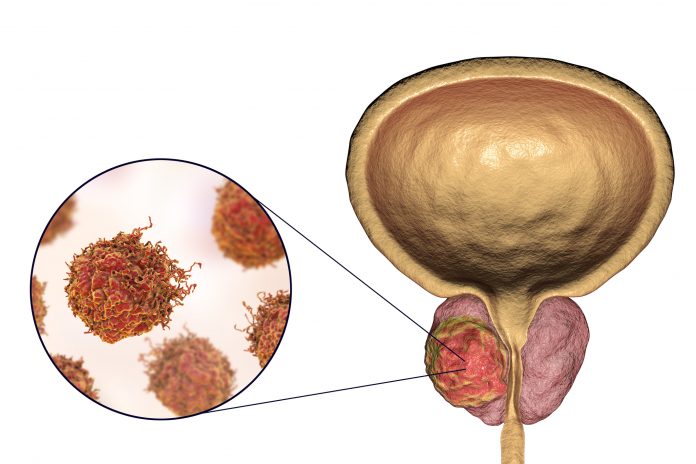
Researchers at the University of Gothenburg in Sweden have discovered a new diagnostic pathway in screening for prostate cancer, halving the risk of overdiagnosis by finding fewer harmless tumors.
Approximately one in eight men will be diagnosed with prostate cancer during his lifetime. Screening for the disease usually involves a blood test looking for prostate-specific antigens (PSA) followed by tissue sampling. Unfortunately, a high proportion of cancer cases detected this way involves small harmless tumors leading to unnecessary treatment with potential risk of permanent complications such as impotence.
Reporting in The New England Journal of Medicine, researchers at Sahlgrenska Academy at Gothenburg University conducted PSA blood tests on over 15,000 male patients followed by magnetic resonance imaging (MRI) of the organ in case of elevated PSA levels. The patients were then divided in two groups.
The reference group received a standard procedure with “blind” tissue samples being taken from various parts of the prostate in case of elevated PSA levels and additional samples in case of a suspicious MRI. In the experimental group, only men with suspicious MRI levels were selected for tissue sampling. According to the researchers, this strategy halved the risk of finding harmless cancers, while the rate of serious prostate cancer discovered remained the same.
“We must get away from the blind sampling of tissues that’s still standard today, rely on the MRI examination, and thus switch diagnostics to taking samples only in those men in whom MRI has depicted tumors—and then only do targeted samples in the area involved,” said Jonas Hugosson, PhD, professor of urology at the University of Gothenburg and senior author of the study.
“This strategy is sharply reducing the number of people who need to undergo tissue sampling, which is an unpleasant procedure with an associated risk of infection. What’s more, the strategy halves the risk of detecting a harmless tumor, which has been the biggest obstacle to introducing general screening for prostate cancer.”
Despite the positive results, the researchers reported that there was a greater probability in detection of a severe cancer could be slightly delayed in a small proportion of patients using the experimental method. However, the scientists remain optimistic.
“The results from this study can pave the way for the introduction of general screening for prostate cancer. But assessment must include also other factors, such as costs and access to MRI scans,” Hugosson concluded.










